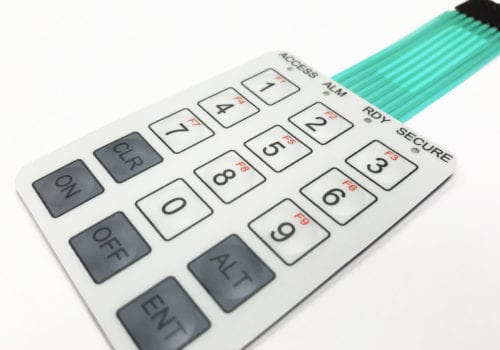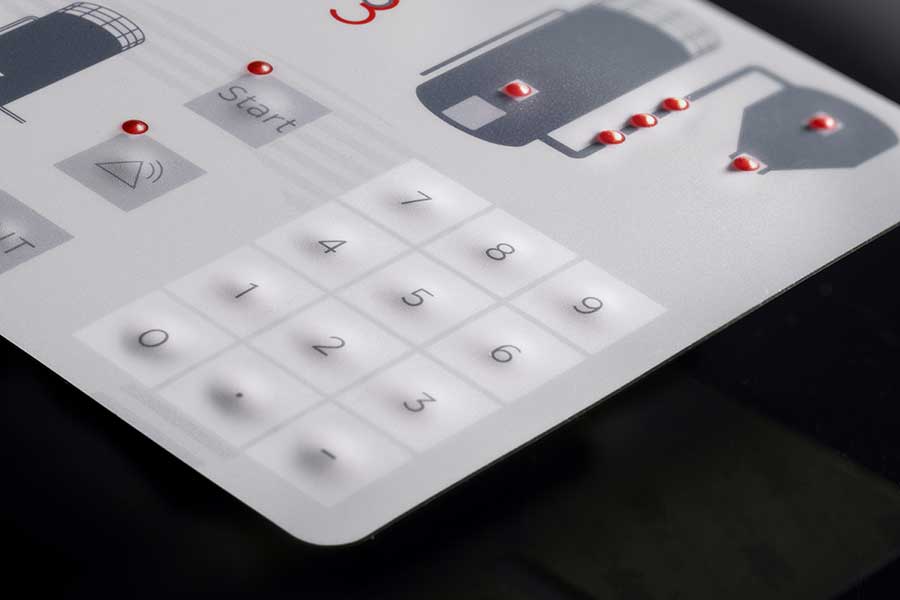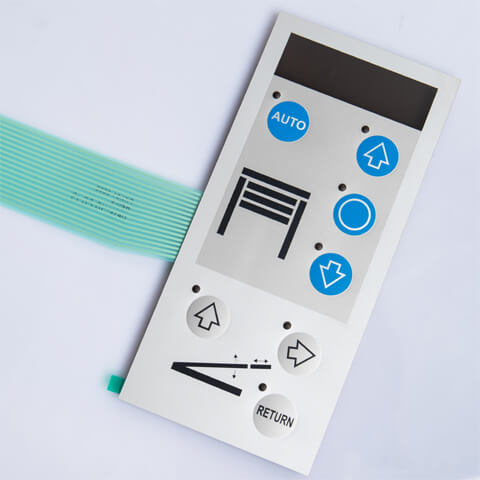Top Advantages of Integrating a Membrane Switch Into Your Digital Equipment
Top Advantages of Integrating a Membrane Switch Into Your Digital Equipment
Blog Article
Comprehending the Capability of Membrane Layer Switches Over for User User Interface Tools
The capability of membrane layer switches over stands for a considerable innovation in interface layout, combining performance with aesthetic versatility. These buttons operate through a multi-layered structure that converts user communications right into electric signals, permitting both small designs and strength against environmental variables. As sectors progressively prioritize customer experience, comprehending the nuances of membrane button technology comes to be important. What implications do these developments hold for future applications, and how might they redefine customer communications across various tools?
What Are Membrane Layer Switches?
Membrane layer buttons are ingenious interface tools that promote user interaction with electronic devices. These versatile elements include multiple layers, including a visuals overlay, spacer, and a published circuit layer. The design enables a seamless assimilation into numerous electronic tools, boosting both the visual and useful elements of interface.
Membrane buttons are generally utilized in a variety of applications, from home home appliances to commercial machinery and clinical devices. Their building and construction normally features a slim account, making them a perfect choice for small designs. The tactile feedback supplied by these switches can be crafted to meet particular individual preferences, making sure efficient communication in between the user and the gadget.
Sturdiness is an additional significant benefit of membrane buttons, as they are resistant to dust, wetness, and chemicals, which enhances their lifespan in requiring settings. Furthermore, these buttons can be personalized in terms of shape, dimension, and graphic design, enabling branding and user-specific features. Generally, membrane layer switches stand for a functional remedy for enhancing individual experience in electronic devices, combining capability with aesthetic charm in an effective manner.
Just How Membrane Changes Job
Operating on an uncomplicated principle, membrane layer changes use a split construction to sign up individual input effectively. Each button contains multiple layers, including a printed circuit layer, a spacer layer, and a leading graphic layer, which are designed to interact flawlessly. When an individual presses the leading layer, it presses the spacer layer, bringing the conductive aspects of the circuit layer right into call with each various other.
This contact develops a shut circuit, signaling the gadget to execute a details feature. The style permits different setups, consisting of responsive responses, which can boost the user experience by giving a physical experience upon activation. The materials utilized in membrane layer buttons typically include flexible substratums, such as polyester or polycarbonate, which make certain toughness and resilience versus wear and tear.

Key Advantages of Membrane Switches

One more significant benefit is their density. Membrane switches are thin and lightweight, which allows suppliers to save space in their tools without giving up performance. This feature is specifically useful in applications where weight and volume are critical considerations.
Furthermore, membrane layer switches are resistant to dust, wetness, and chemicals, improving their durability. This durability expands their lifespan and lowers the requirement for constant replacements, causing cost savings over time.
In addition, the tactile responses supplied by membrane layer switches can be enhanced to improve individual communication. They can include functions such as elevated switches or audible clicks, enhancing usability and user experience.
Applications Across Industries
Interface tools utilizing membrane layer switches prevail in a broad variety of markets, showcasing their flexibility and performance. Membrane Switch. In the clinical field, membrane switches are important to tools such as analysis tools and client tracking systems, where their toughness and simplicity of cleansing are critical for maintaining hygiene requirements. In a similar way, in the automotive industry, these switches are employed in control panel controls and infomercial systems, providing a streamlined and modern-day user interface for customers.
Additionally, the customer electronics sector benefits from membrane buttons in devices and handheld gadgets, where compact design and user-friendly interfaces improve user experience. Industrial applications likewise take advantage of membrane switches over for control panels in machinery and automation systems, emphasizing their effectiveness and resistance to extreme settings.
In the aerospace and defense industries, membrane buttons are made use of in cockpit controls and tools, where integrity and efficiency under severe conditions are critical. Additionally, the gaming sector significantly incorporates membrane layer switches in controllers and gallery makers, adding to an engaging user experience. Generally, the adaptability of membrane switches allows their widespread usage across numerous fields, highlighting their significance in contemporary user interface layout.
Future Patterns in Membrane Layer Change Innovation

In addition, the use of sophisticated products, such as polycarbonate and polyester films, is anticipated to climb, providing improved sturdiness and resistance to ecological stressors. These materials add to the total long life of membrane switches, making them appropriate for harsher commercial applications.
Additionally, the incorporation of wise innovation, consisting of IoT connectivity, will allow membrane layer buttons to connect with various other devices and systems, assisting in an extra interactive user experience. This trend aligns with the growing need for clever gadgets throughout different sectors, from medical care to customer electronics.
Finally, modification choices are anticipated to broaden, enabling manufacturers to create bespoke services customized to details customer requirements and preferences. These advancements will certainly place membrane layer switches as essential components in the evolution of customer interface modern technology.
Verdict
In final thought, membrane switches stand for a critical improvement in interface technology, offering a dependable and versatile solution for varied electronic applications. Their split building assists in portable style, while functions such as tactile responses improve user interaction. The resilience versus environmental elements additionally solidifies their energy across multiple sectors. Look At This As improvements in material science and touch noticing technologies proceed, the performance and applicability of membrane switches are anticipated to expand, enhancing their relevance in contemporary digital devices.
Report this page